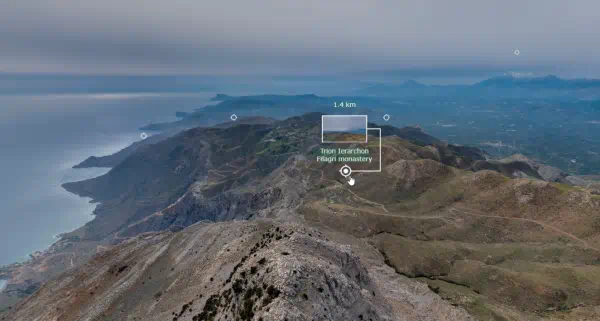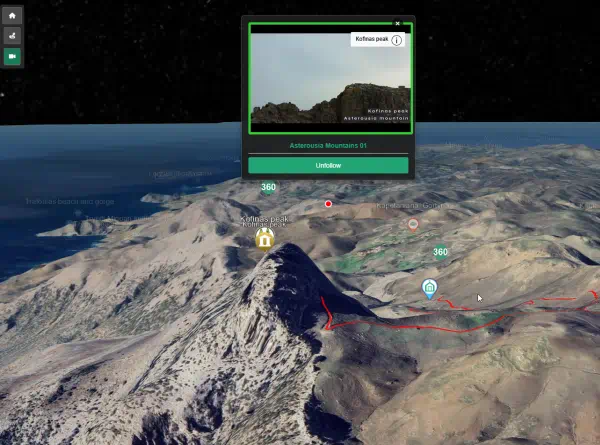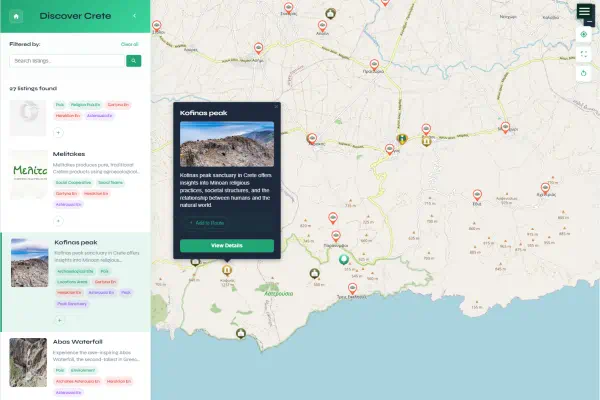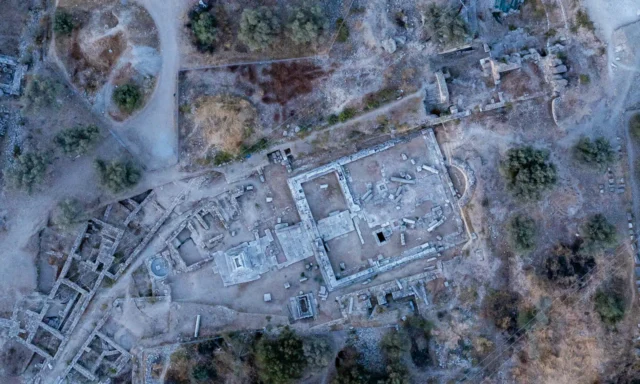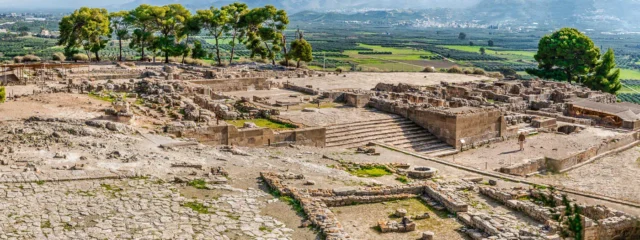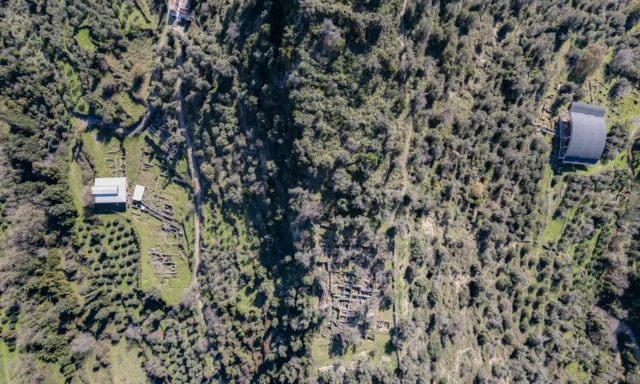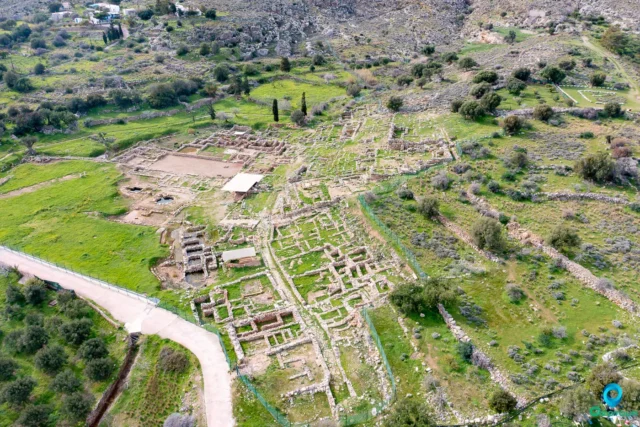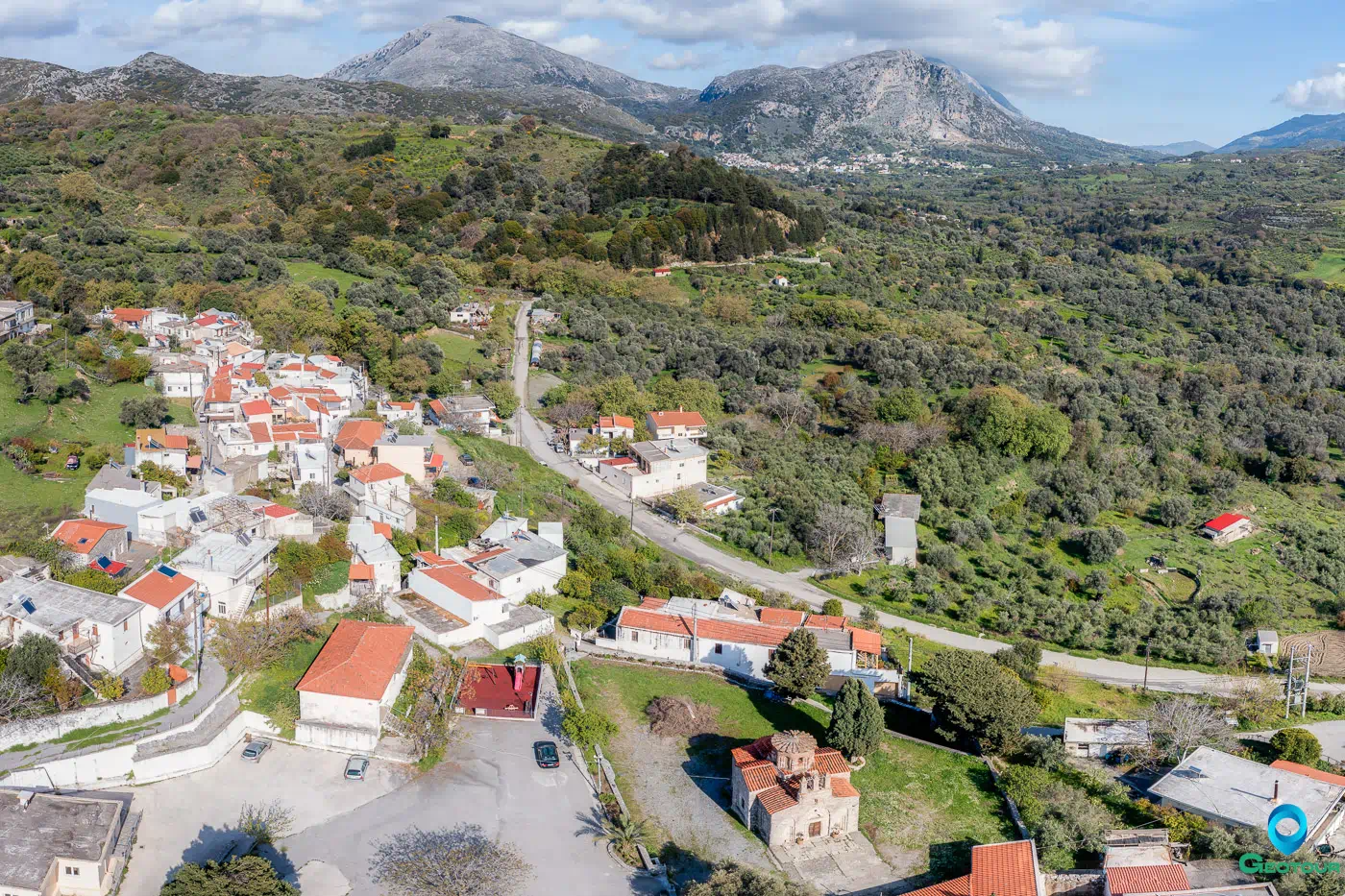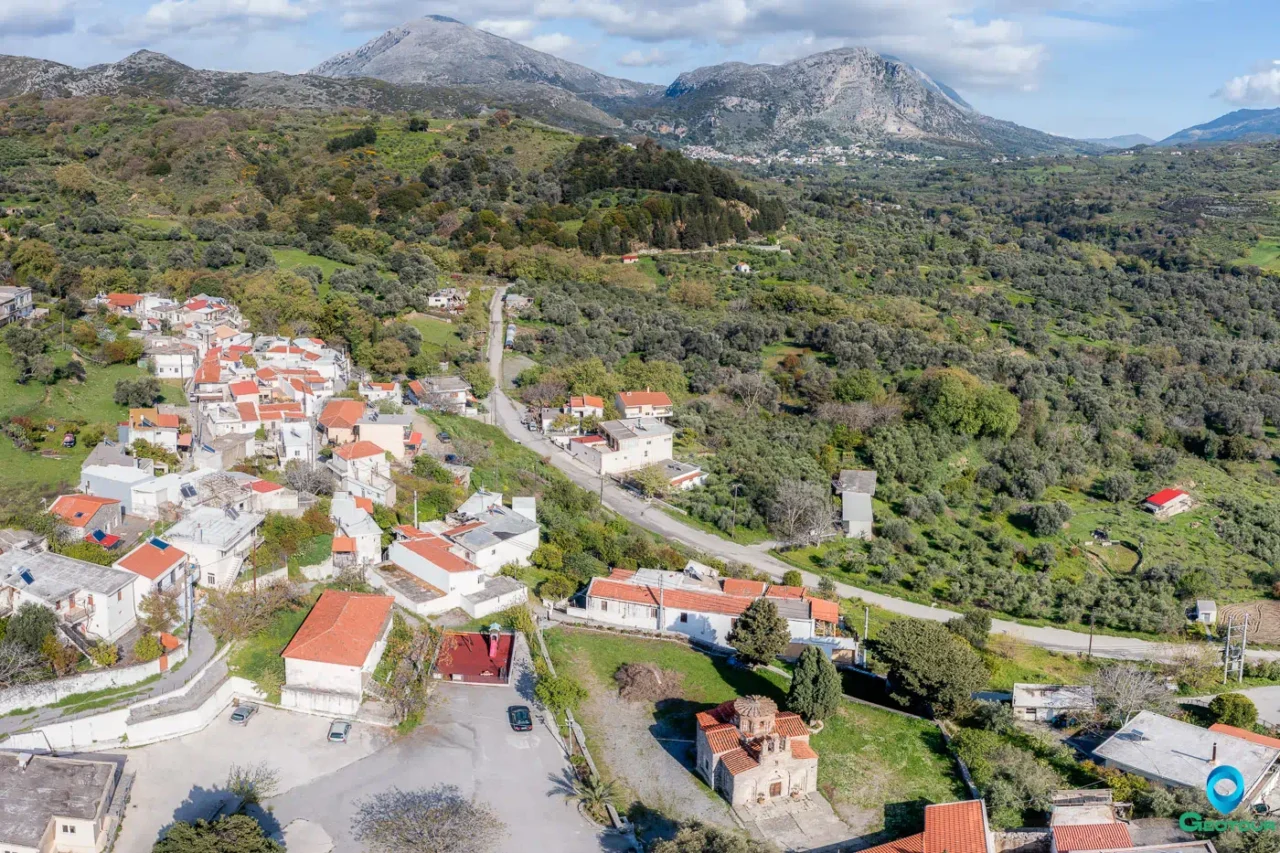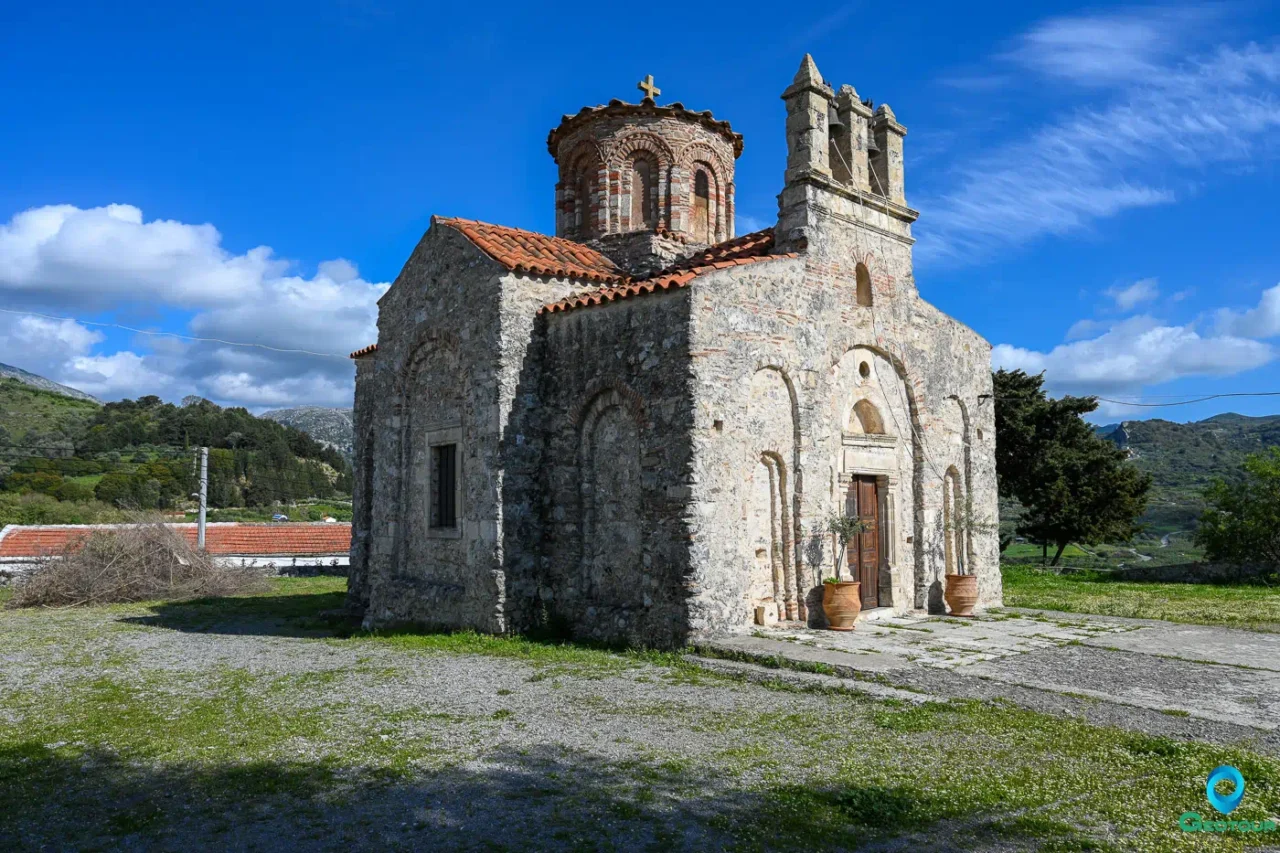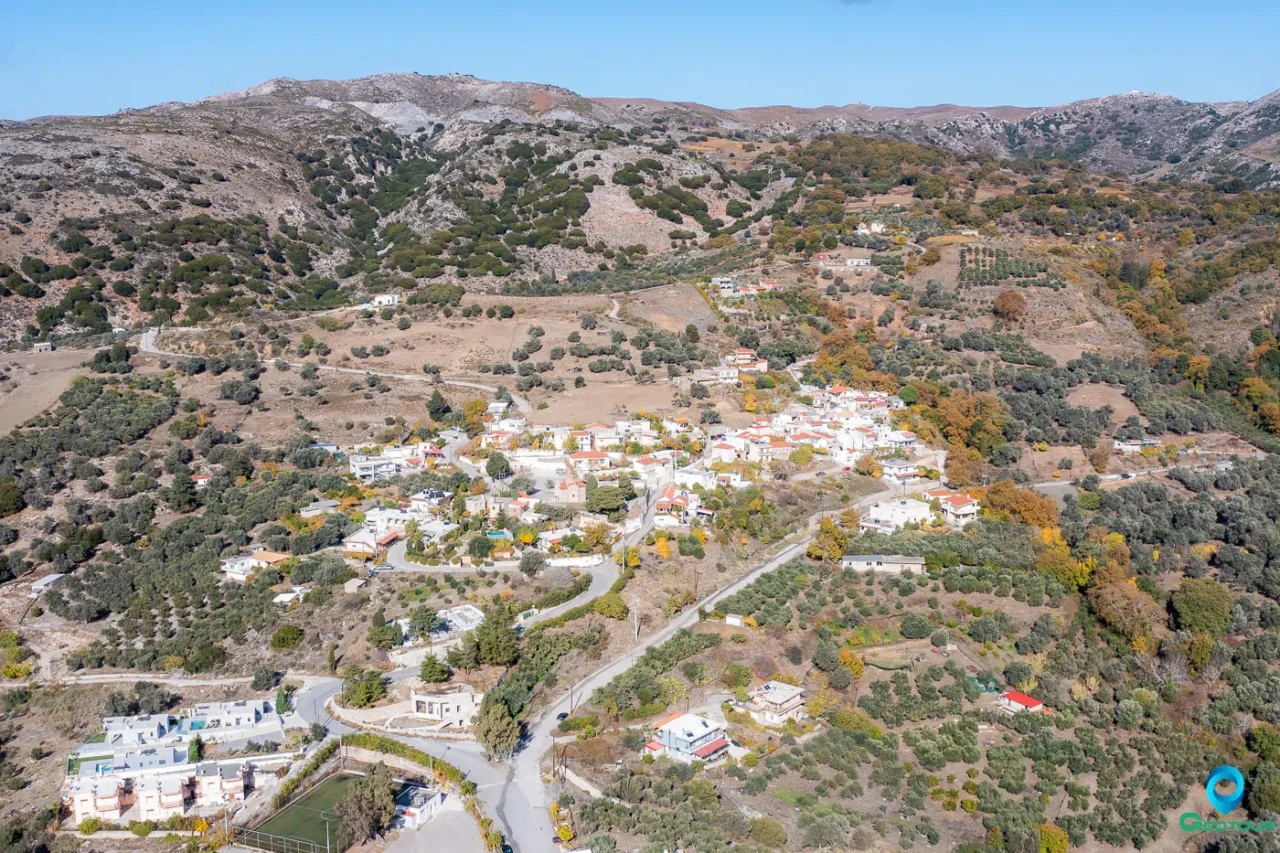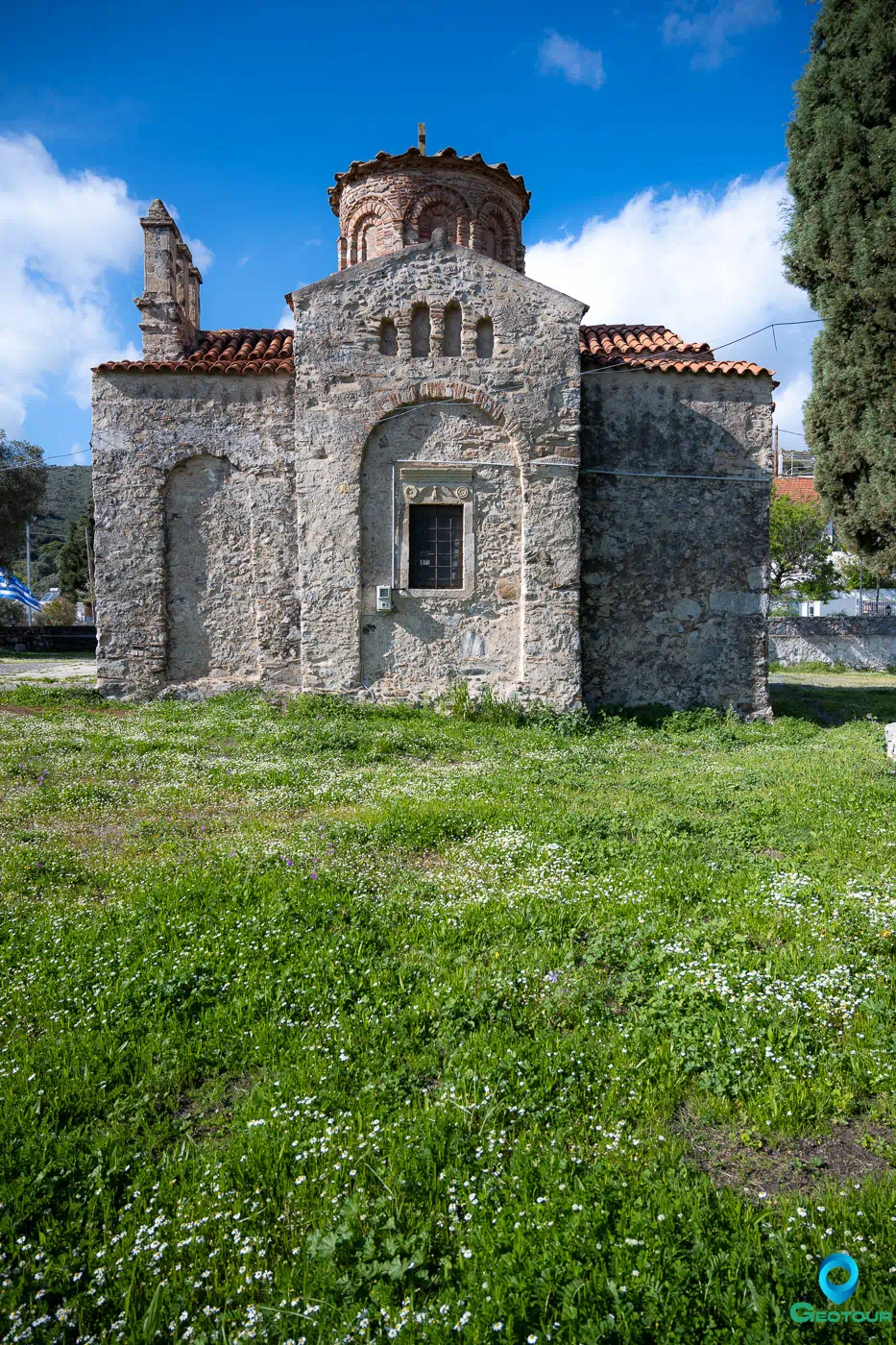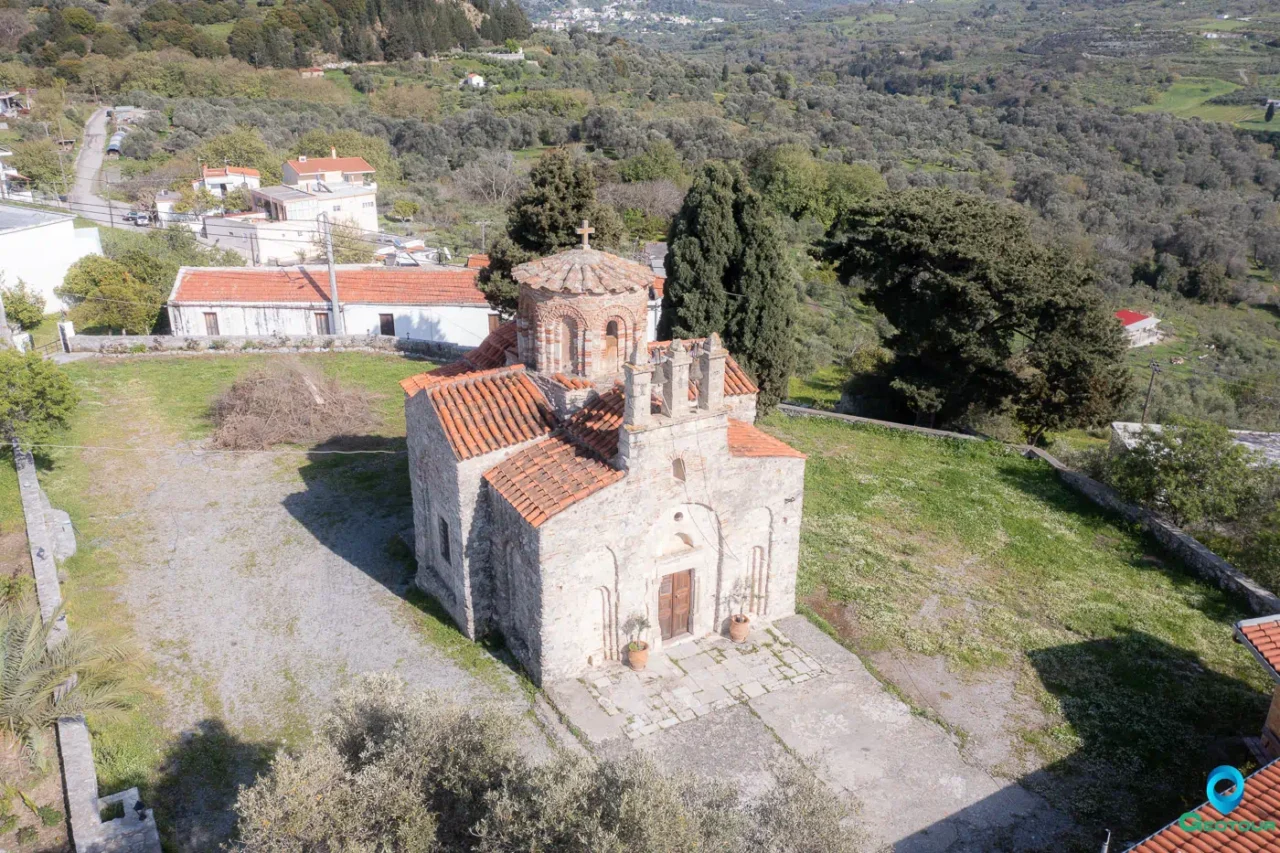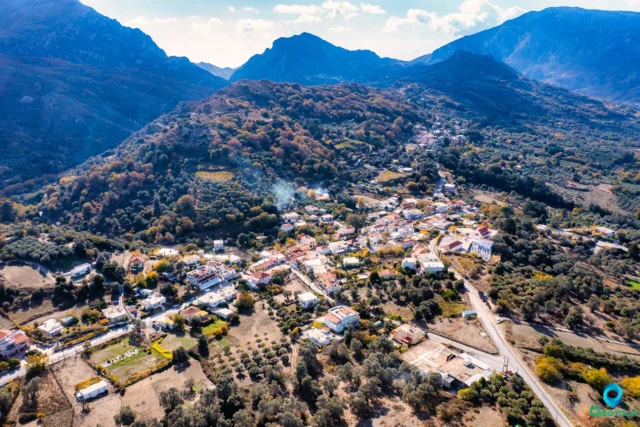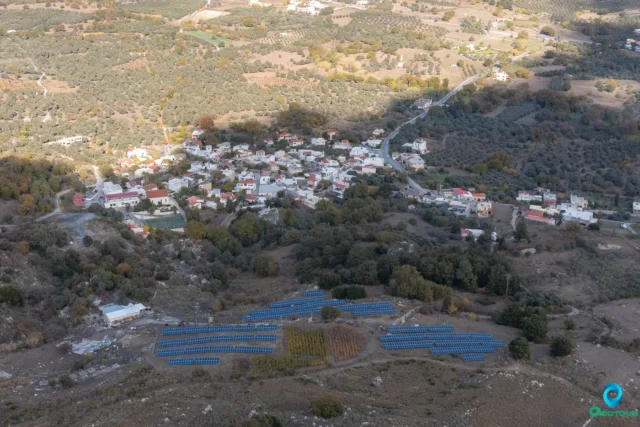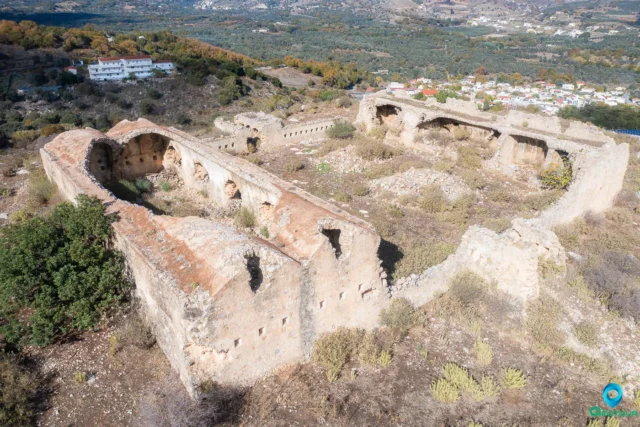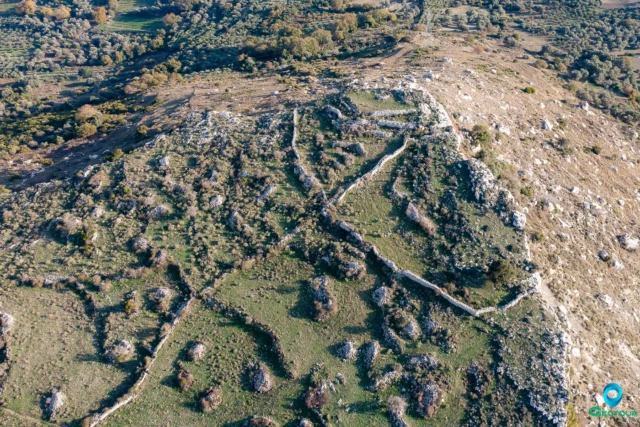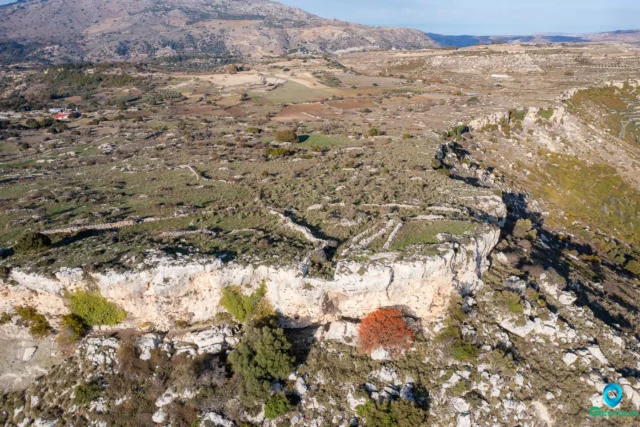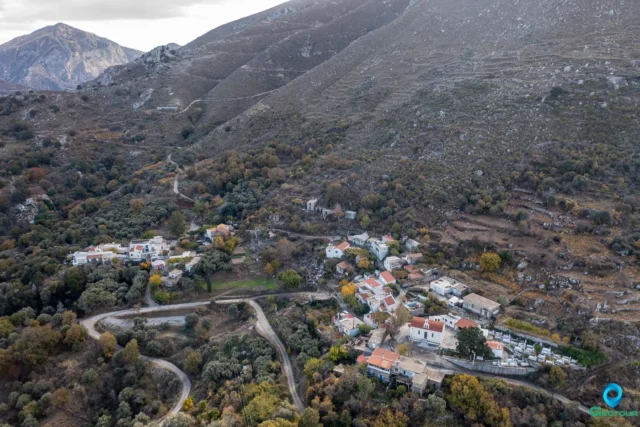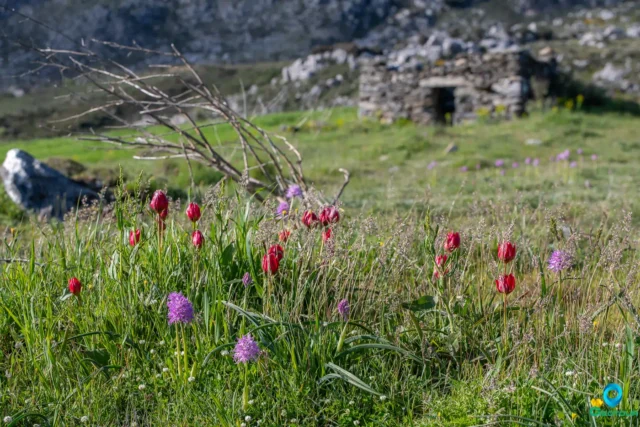Lambini (Greek: Λαμπινή) is a village and the administrative center of the homonymous community within the Municipality of Agios Vasileios, in the Regional Unit of Rethymno, Crete. It is situated 27 kilometers from Rethymno and 4 kilometers from Spili, at an altitude of 460 meters.
Etymology
The name Lambini is believed to be derived from “Lambini,” an adjective indicating a connection with the ancient city of Lappa or Lambi. The old church of the village is known as Panagia Lambini (Virgin Mary of Lambini), and it is possible that the village’s name originated from this church. In the past, it served as the seat of the Diocese of Lambi when it was re-established during the Ottoman period. Olga Gratziou has suggested that the name Panagia Lambini might refer to a now-lost Byzantine icon of the same name, which originated from Byzantine Lambi.
History
Remains of Roman-era houses have been discovered in the area of the village. The village was mentioned by Francesco Barozzi in 1577 as Lambini in the province of Agios Vasileios. In the Venetian census of 1583 by Kastrofylakas, it is listed as Lambini with 74 inhabitants. Vasilikata also mentioned the village in 1630 as Lambini. The Ottoman census of 1659 recorded 15 houses.
A significant historical event occurred on January 20, 1829. A Janissary from Lambini, known as Albanis, who had previously been shot but not killed by a fellow villager, sought revenge. He and other Turks surrounded the church of Panagia Lambini during a service. Some of the Christians, armed due to the ongoing revolution, barricaded themselves inside. Albanis and his men threw burning rags into the church, setting the door on fire. He then offered that if those inside surrendered, they would not be harmed. Although initially distrustful, the besieged eventually threw their weapons out. The Turks then stormed the church, killed all the men, and took the women and children to be sold in the slave market in Rethymno. This story was recounted by one of the women to Robert Pashley, who recorded it.
In the 1834 census conducted by the Egyptians, Lambini was recorded along with ten other villages in the region. In the 1881 census, it belonged to the municipality of Lambi and had 136 Christian and 51 Turkish inhabitants. In the 1900 census, it had 154 inhabitants. In the 1920 census, it was listed as belonging to the rural municipality of Dariviana. In 1925, Lambini was annexed to the community of Myxorrouma, but in 1931 it was designated as the seat of its own community until the Kapodistrian administrative division, when the village was annexed to the Municipality of Lambi.
Points of Interest
Church of Panagia Lambini
The village features the Byzantine church of Panagia. It is a cross-in-square type church with a dome supported by four piers, with protruding side arms and an impressive bell tower. Both the exterior walls and the cylindrical dome have blind arches. The interior preserves frescoes in a plastic style that appeared in the early 14th century, though many are worn and their colors have faded. It is believed that this imposing church may have served as the seat of the Diocese of Lambi, with which its name is associated. In 1950, a fresco of Panagia Platytera with the inscription “ΛΑΜΠΗΝΗ” (LAMBINI) was found in the apse of the sanctuary.
The interior walls of the church have four layers of frescoes:
- The first layer, dating to the late 12th century and belonging to Komnenian art, is mainly found in the sanctuary and the northwest corner compartment, with representations of hierarchs and angels in the quarter-sphere, and the Dormition of the Theotokos and Saint Nicholas on the north wall. This layer has suffered damage from hammering, done to ensure better adhesion of the subsequent layer.
- The second layer, from the mid-13th century, is located on the west side of the church.
- The third layer, dating to the early 14th century, predominantly covers the previous layers and includes scenes from the Mariological and Christological cycles, and the Second Coming. The ktetor (founder) Ioannis Kapsodasis is depicted with an inscription dated 1301.
- The last layer includes some scenes from the Mariological cycle and Saint Eustathios, and dates to the first half of the 15th century.
On January 20, 1829, during the Divine Liturgy, Ottoman forces demanded the surrender of the worshippers who had taken refuge inside. When they resisted, the Ottomans burned the door, invaded the church, massacred all the men, and subsequently burned their bodies. The women were taken to Rethymno and sold as slaves.
Funerary Portrait of Ioannis Kapsodasis:
In the south arm of the church, the funerary portrait of Ioannis Kapsodasis is depicted. The young, beardless man is shown wearing a white garment and holding a book. An inscription on either side of the figure states the date of his death as September 22, 6800 from the creation of the world (which corresponds to 1301 AD):
“ΕΚΟΙΜΗΘΗ Ο | ΔΟΥΛΟC ΤΟΥ [Θ(ΕΟ)Υ] | ΙωΑΝΝΗC MONAXOY TOY | ΚΑΨωΔΑCI Κ(ΑΙ) | ΟΥΤΟC ΕΞΕΔΗΜΗ | CΕΝ μ(ηνί) CEPTE(ΜΒΡΙω) | Β, ἔτους [ς]ωι΄ |ΙΝ(ΔΙΚΤΙωΝΟC) ΙΕ’”
(Translation: The servant of God Ioannis, monk, son of Kapsodasis, reposed and departed this life in the month of September, 2nd, year 6801, Indiction 15.) Note: The text mentions year 6800 but the inscription shows ςωι΄ which is 6810; however, 1301 corresponds to 6809/6810 from creation (Byzantine calendar). The prompt provided 1301 and 6800 directly from the source text.
Representation of Saint Eustathios Plakidas:
In the west arm of the church, there is a rare representation of Plakidas, a high-ranking officer during the reign of Emperor Trajan, who converted to Christianity after Christ appeared to him in a vision during a hunt. In the depiction, the saint is shown on horseback, holding a spear and galloping to the right, while the figure of Christ appears from the upper right corner. The inscription records the words Christ addressed to the mounted hunter:
“ΠΛΑΚΗΔΑ ΠΛΑΚΙ | ΔΑ ΤΙ ΜΕ ΔΗΟΚΙC | ΕΓΩ ΥΜΗ Ο Χ(ΡΙCΤΟ)C ON CI ΔΗΩ”
(Translation: Plakidas, Plakidas, why do you persecute me? I am Christ whom you persecute.)
Abandoned Settlement of Lofia
Northwest of Lambini lies the abandoned settlement of Lofia. Only two churches remain from this settlement: the church of Agios Ioannis Theologos (Saint John the Theologian) and the church of Agios Georgios (Saint George), the latter of which is frescoed.
Settlement: Key Points
- Historical References: Mentioned by Francesco Barozzi (1577), Kastrofylakas (1583), Vasilikata (1630), Ottoman census (1659). Site of a tragic massacre in 1829.
- Location: 27 km from Rethymno, 4 km from Spili, Regional Unit of Rethymno, Crete. Altitude of 460 meters.
- Historical Significance: Former seat of the re-established Diocese of Lambi during the Ottoman period. The Church of Panagia Lambini is a significant Byzantine monument with multiple layers of frescoes.
- Current Status: Village and administrative center of the community of Lambini, Municipality of Agios Vasileios.
- Population Data:
Year |
Population |
Notes |
1583 |
74 |
as Lambini |
1881 |
187 |
136 Christians, 51 Muslims |
1900 |
154 |
|
1920 |
186 |
|
1928 |
215 |
|
1940 |
241 |
|
1951 |
246 |
|
1961 |
226 |
|
1971 |
171 |
|
1981 |
187 |
|
1991 |
154 |
|
2001 |
171 |
|
2011 |
116 |
|
2021 |
116 |
References

